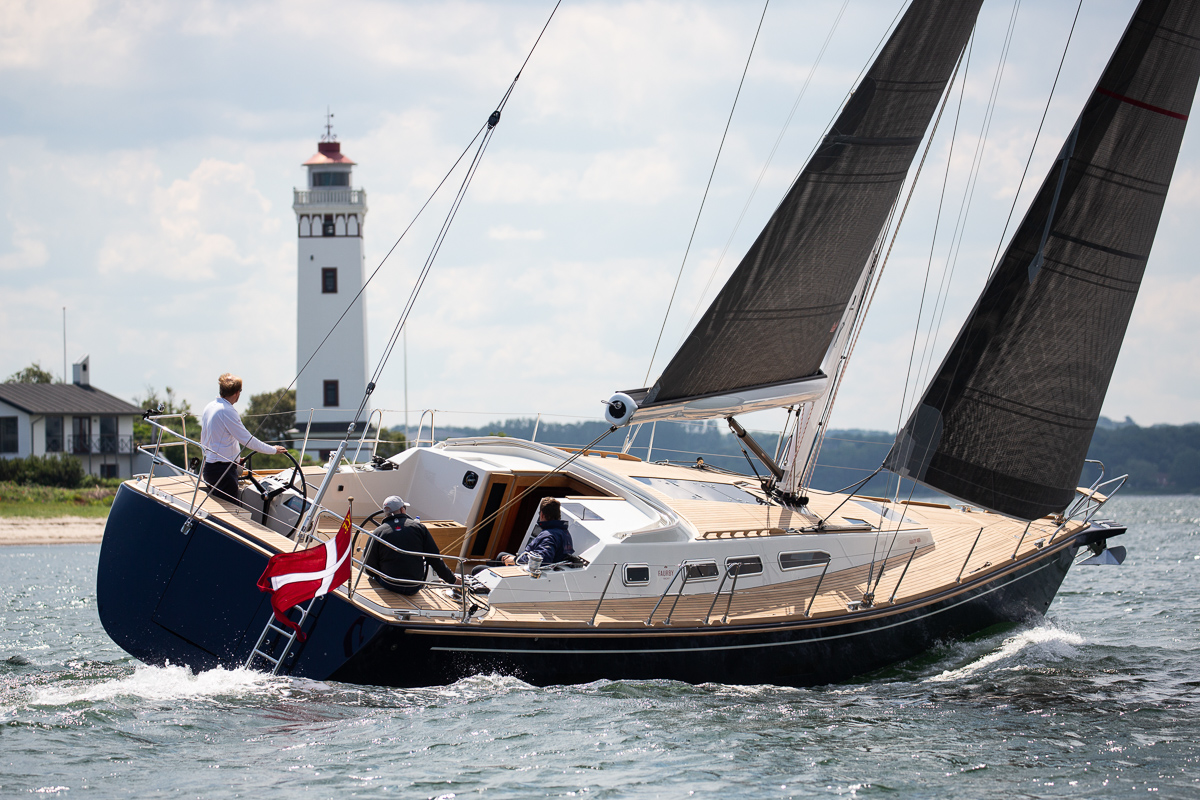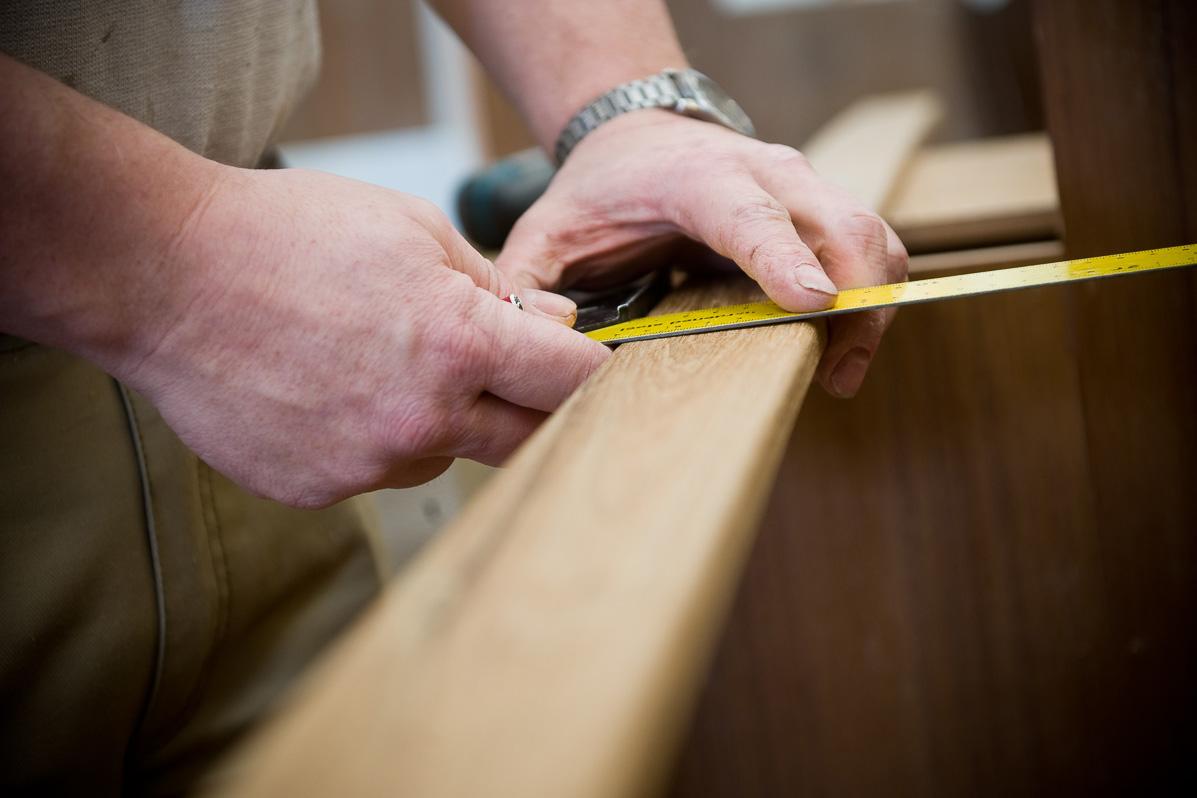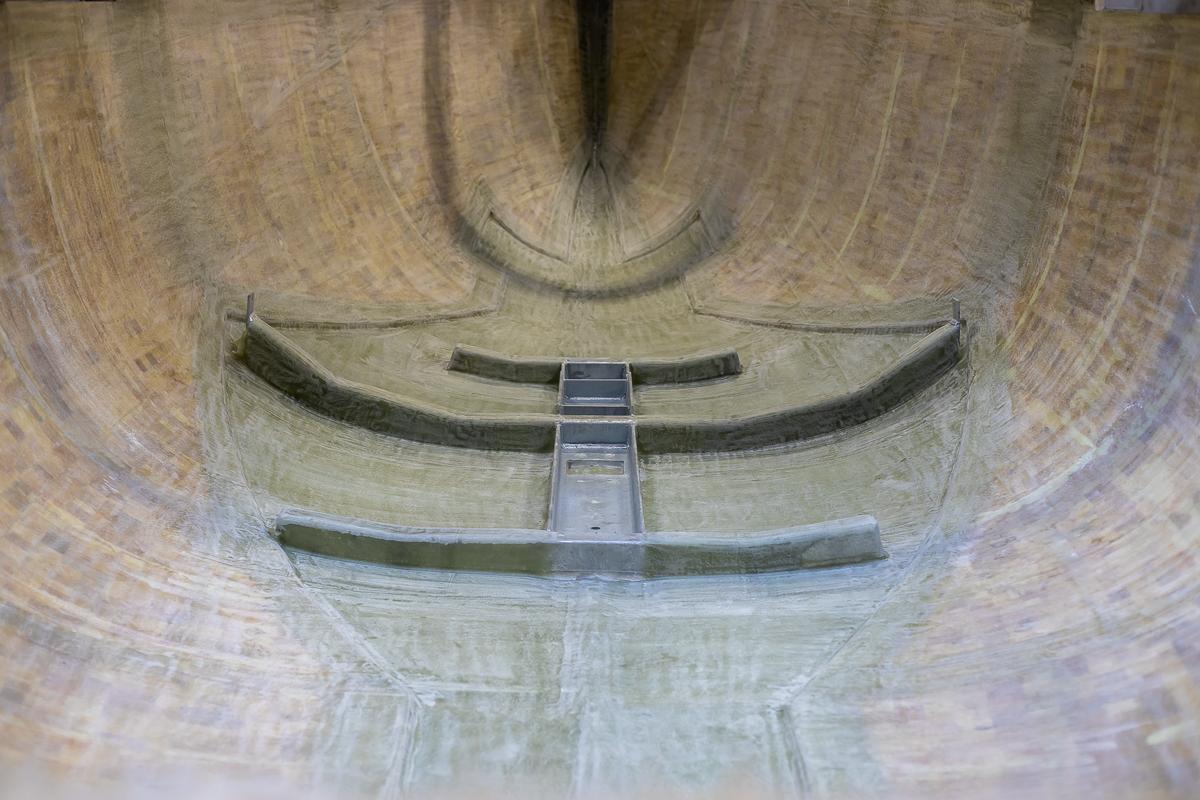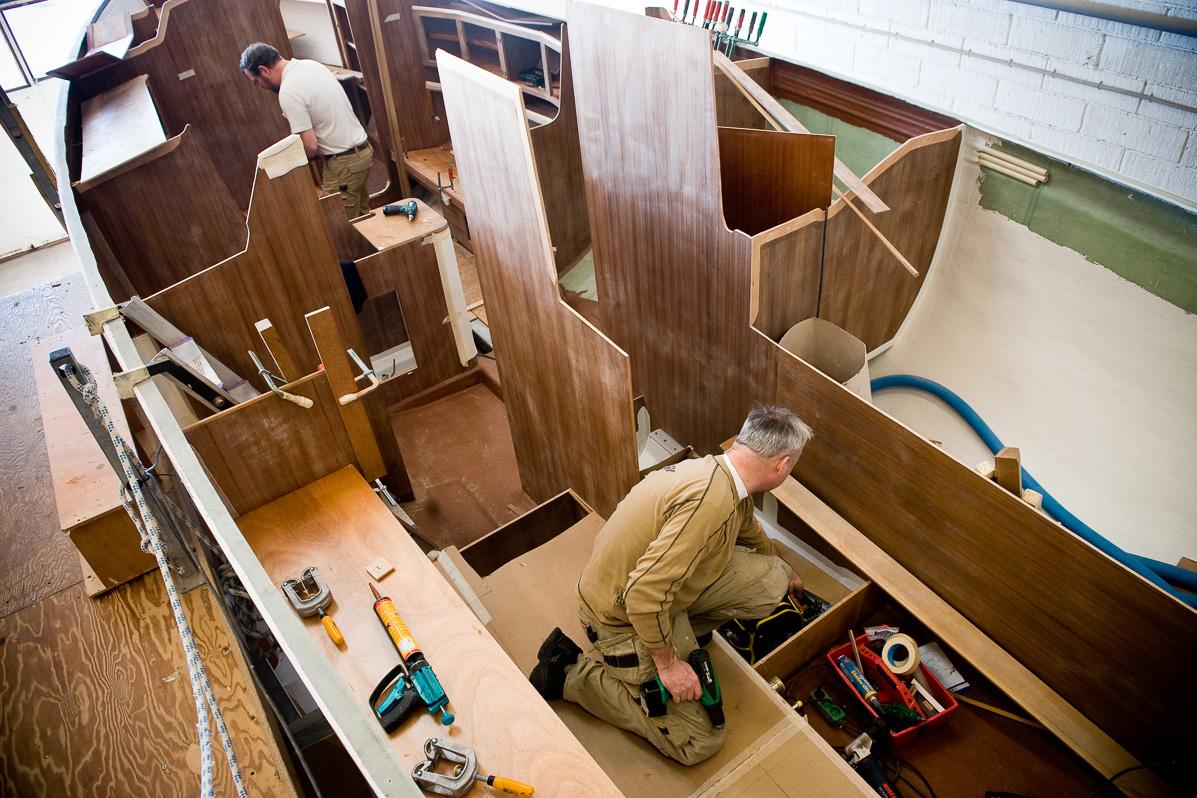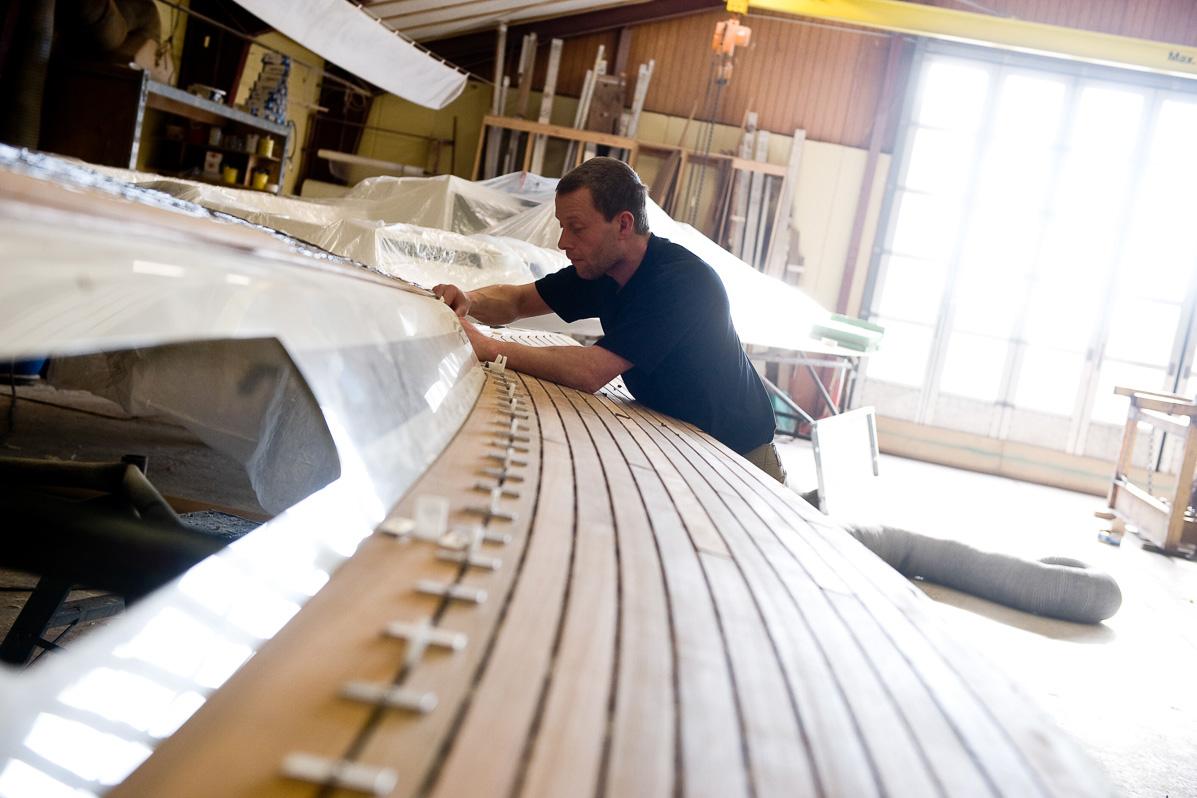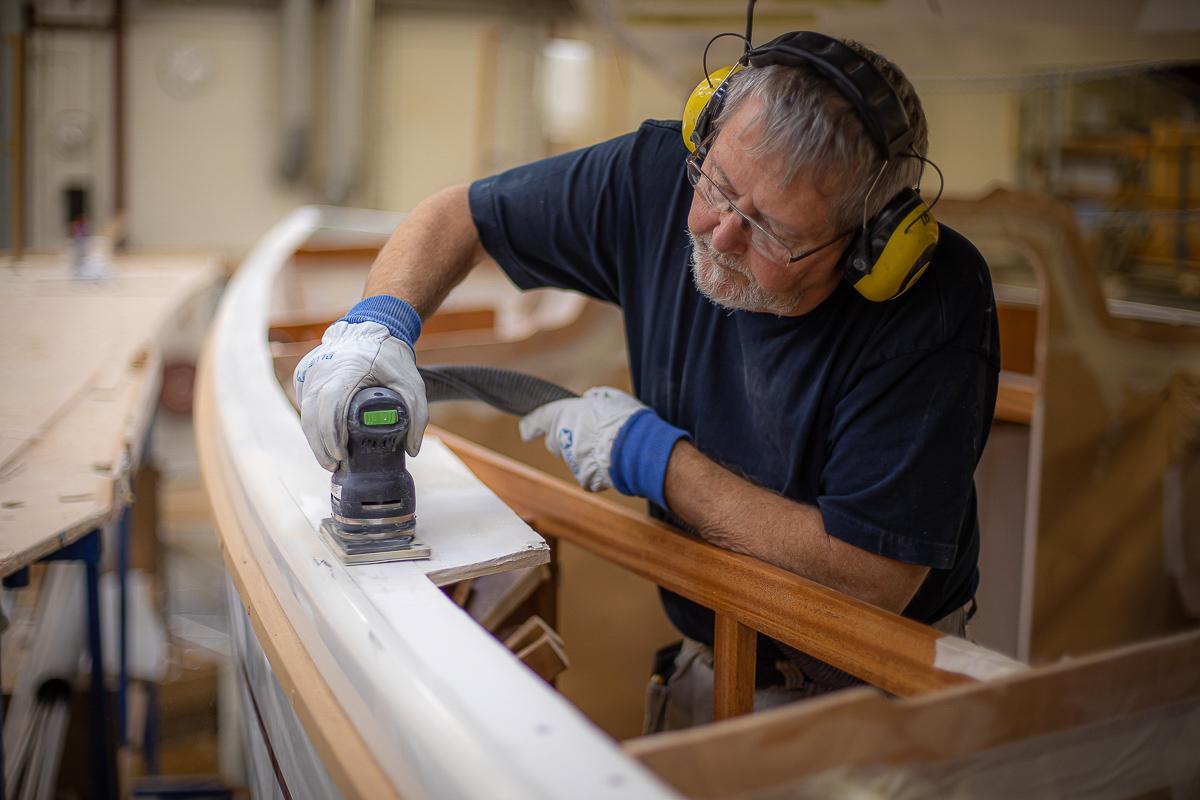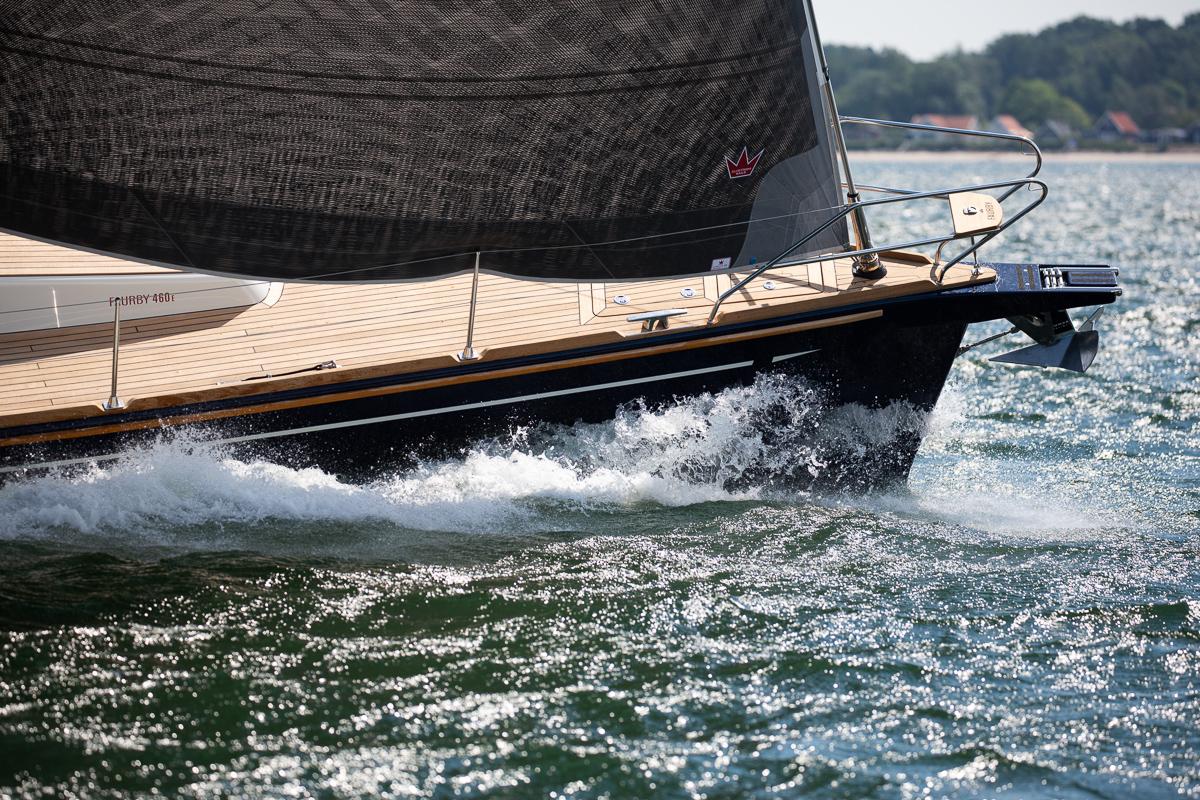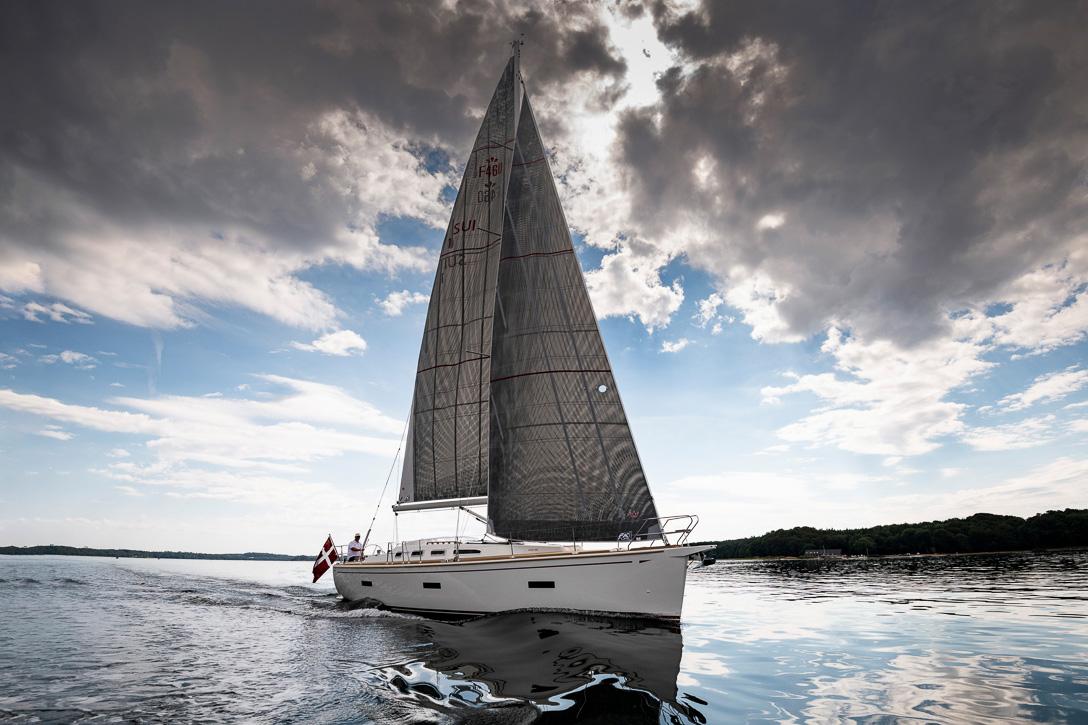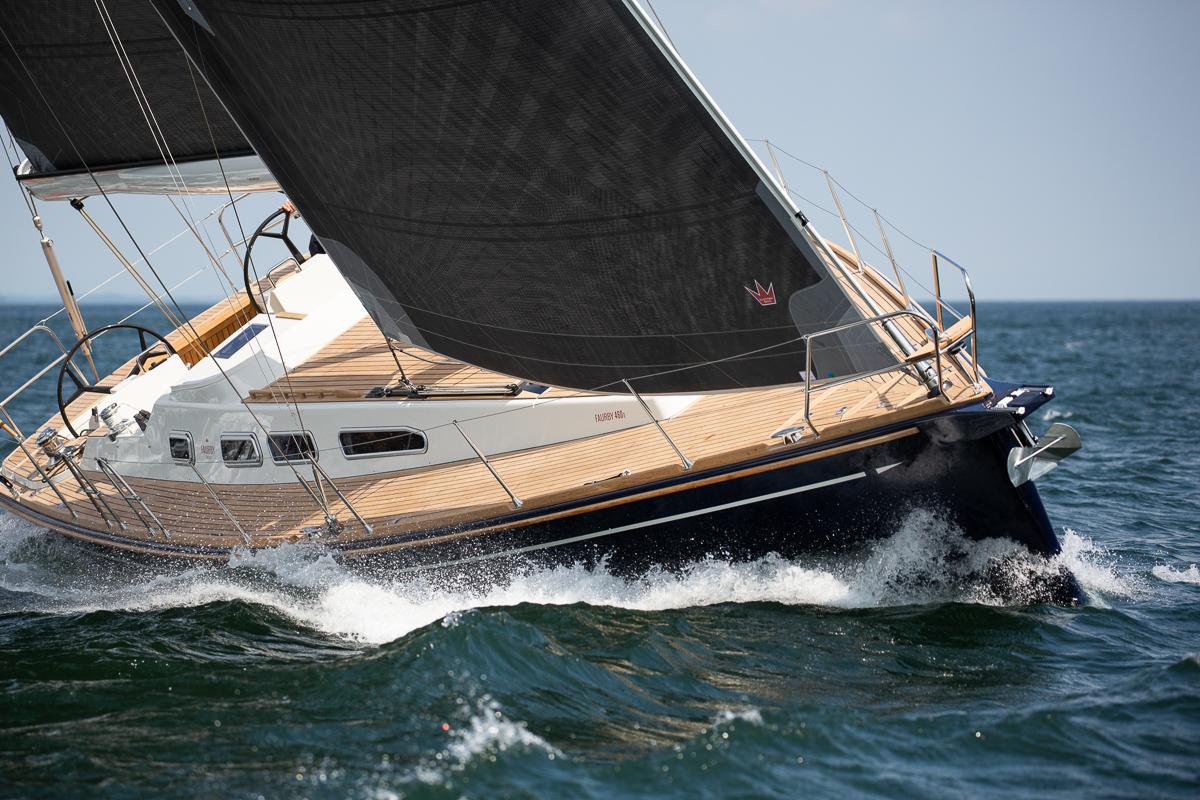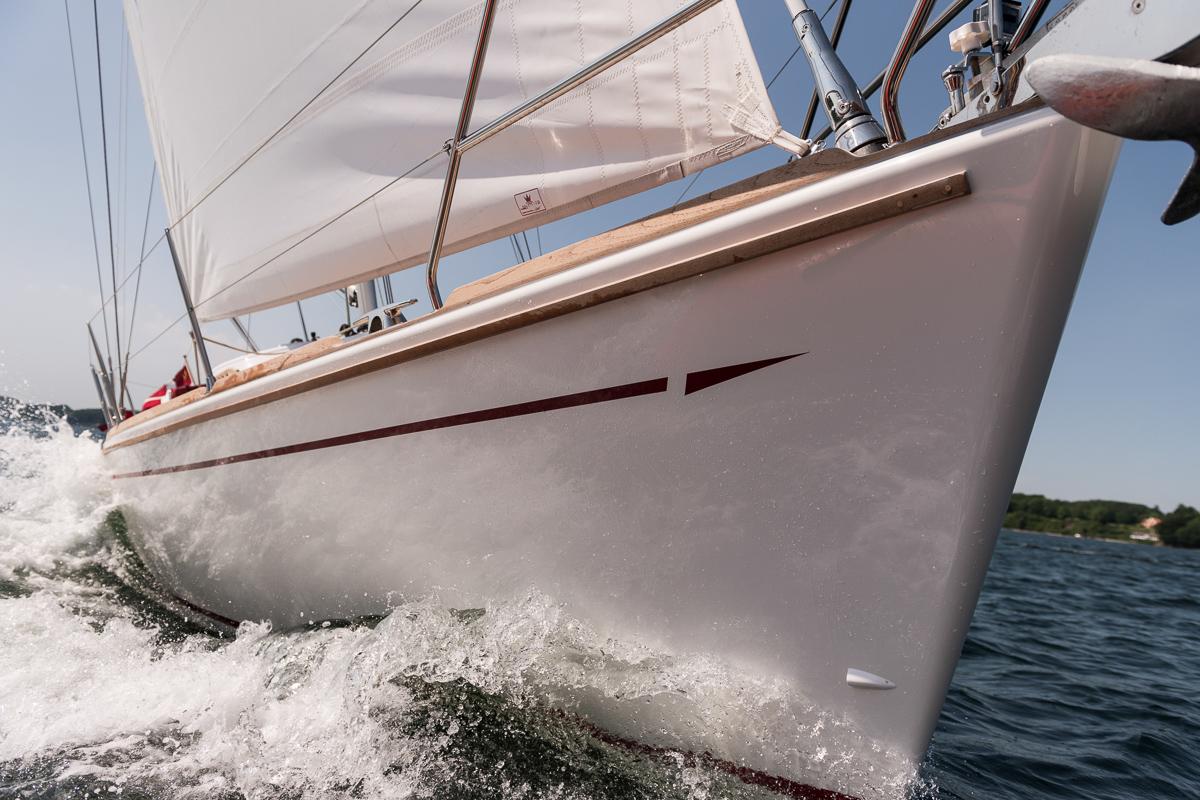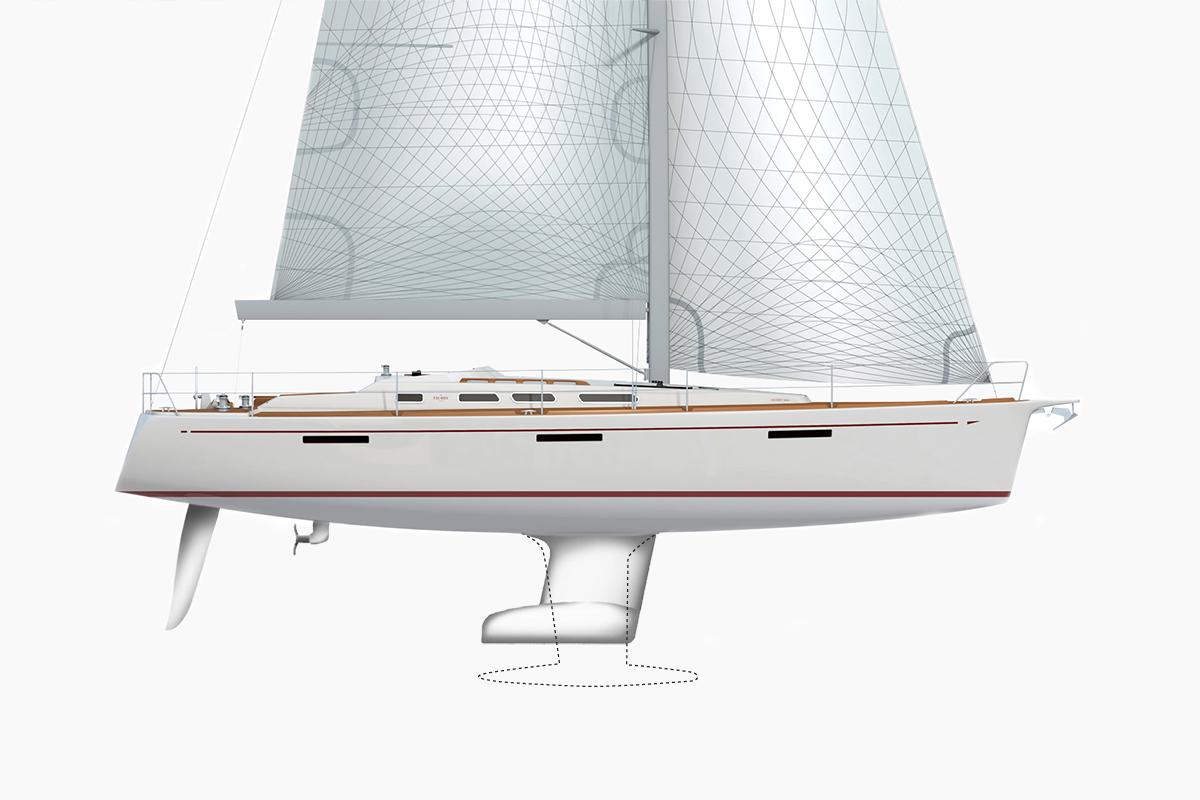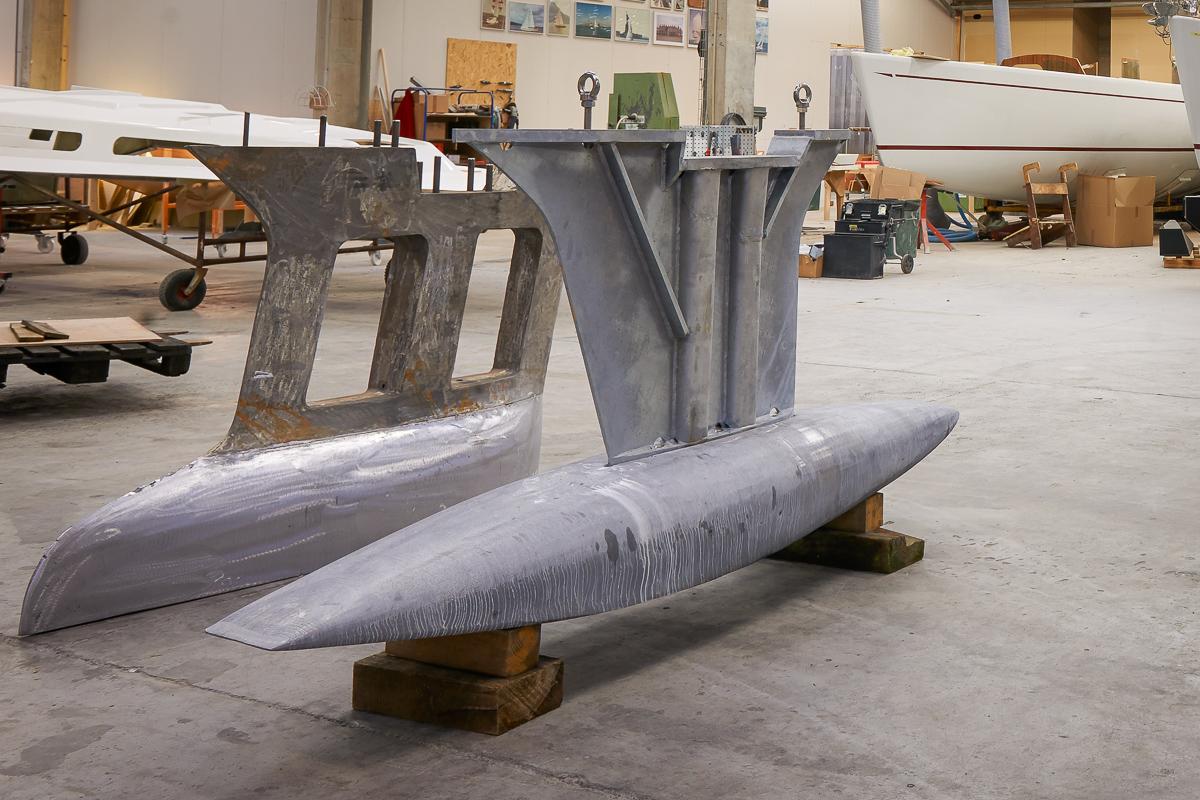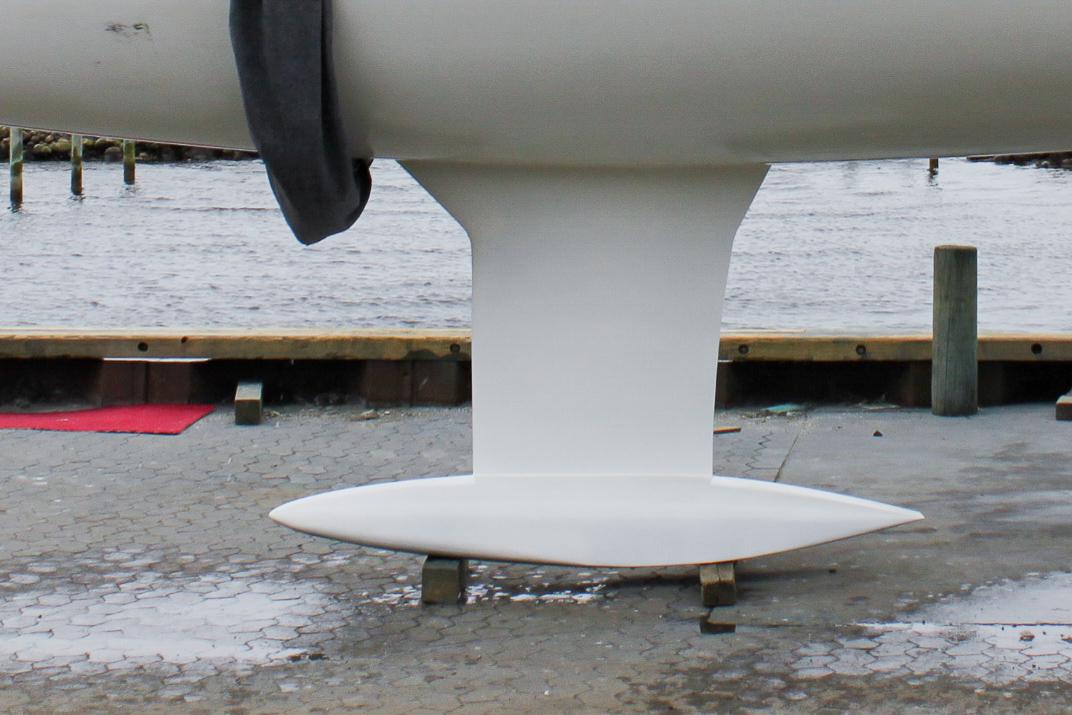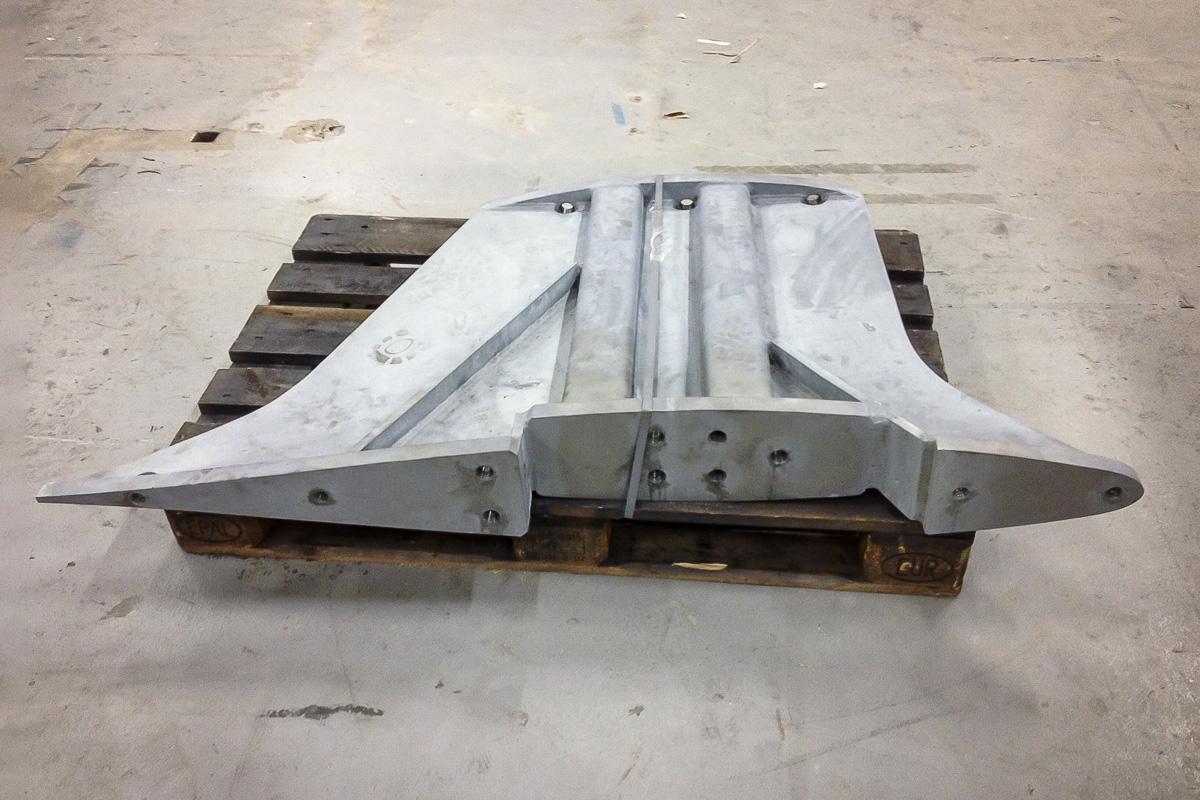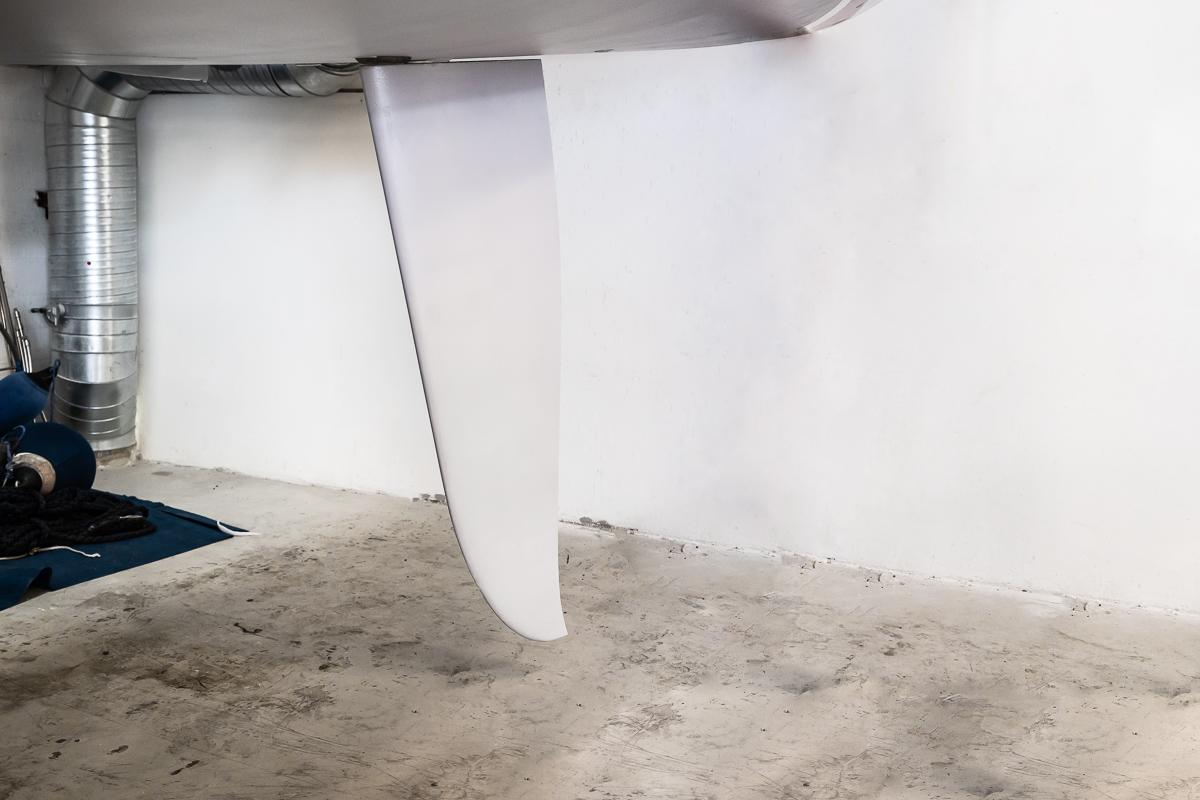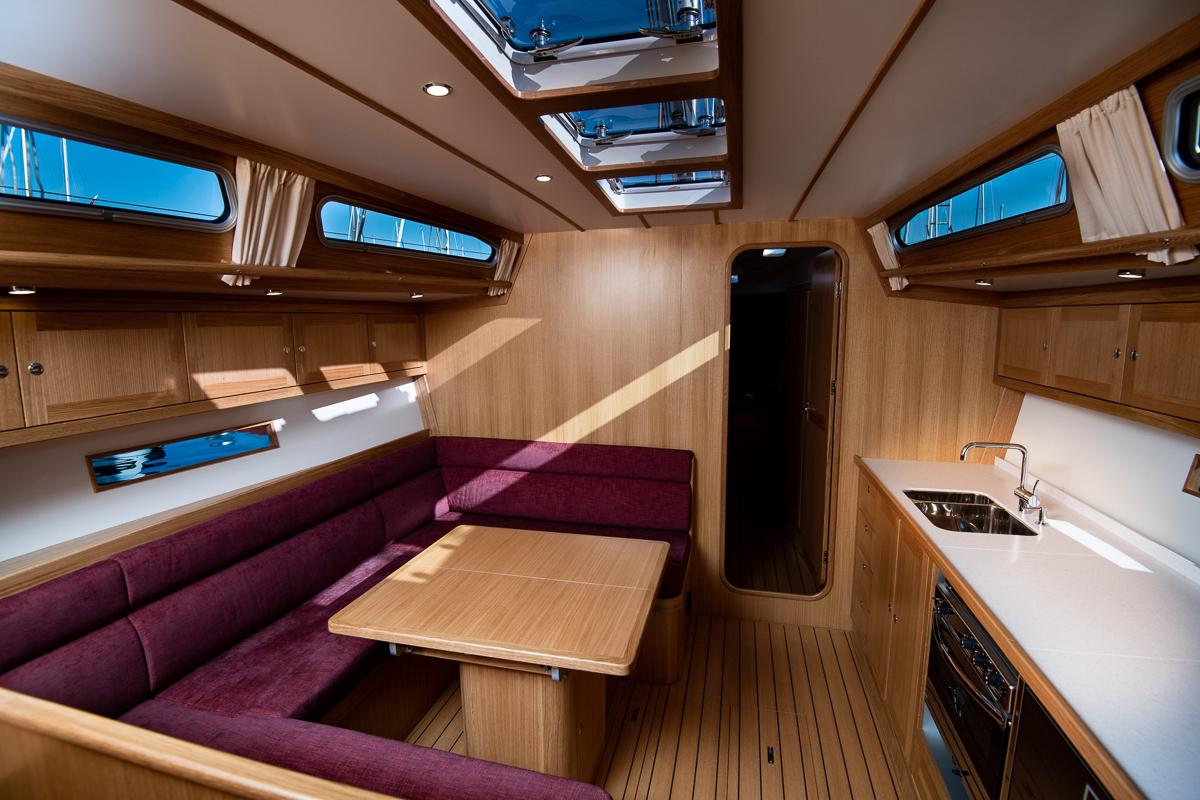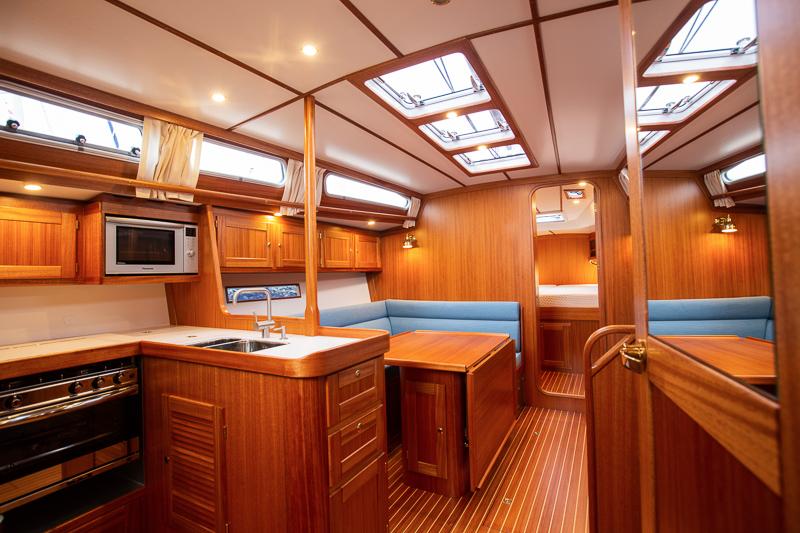Specification
Faurby 460
The flagship of the Faurby range, here more than ever before we can deliver exactly what you want or need. The whole interior can be tailored to your own specifications – whether you want a stylish, spacious and luxurious long-distance cruiser for a couple, a yacht that can offer nine or more berths, or anything in between. No two Faurby yachts are the same and every Faurby 460 we have built has been more comprehensively customised than any of our other models.
They may look identical on the outside but inside the Faurby 460, your own imagination and the space within the hull are the only limits to you can achieve. The first hull had a vast linear galley running the length of the saloon with C-shaped seating opposite for a family of eight; the interior was crafted in light, warm oak. The second hull was built for a couple with spacious L-shaped seating to port and a long, straight sofa-seat opposite, while the galley was L-shaped and set aft of the saloon. This yacht’s mahogany interior was beautifully finished with her owner’s choice of classic brass fittings.
The cockpit is long and deep, making it safe and well protected. Uniquely for Faurby, we’ve opted for twin wheels to give better access in port and a better view from the helm under sail. On deck, more than any other Faurby in the range we’ve hidden as many of the lines as possible beneath the decks to keep the boat looking clean while maintaining a clear passage for crew going forward.
